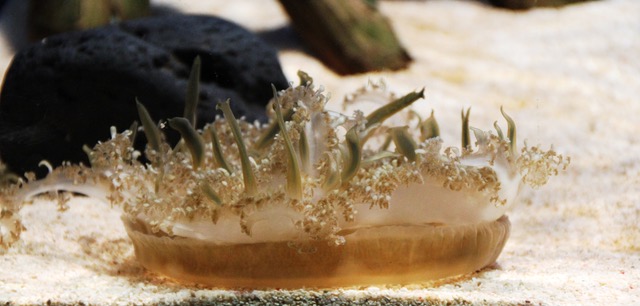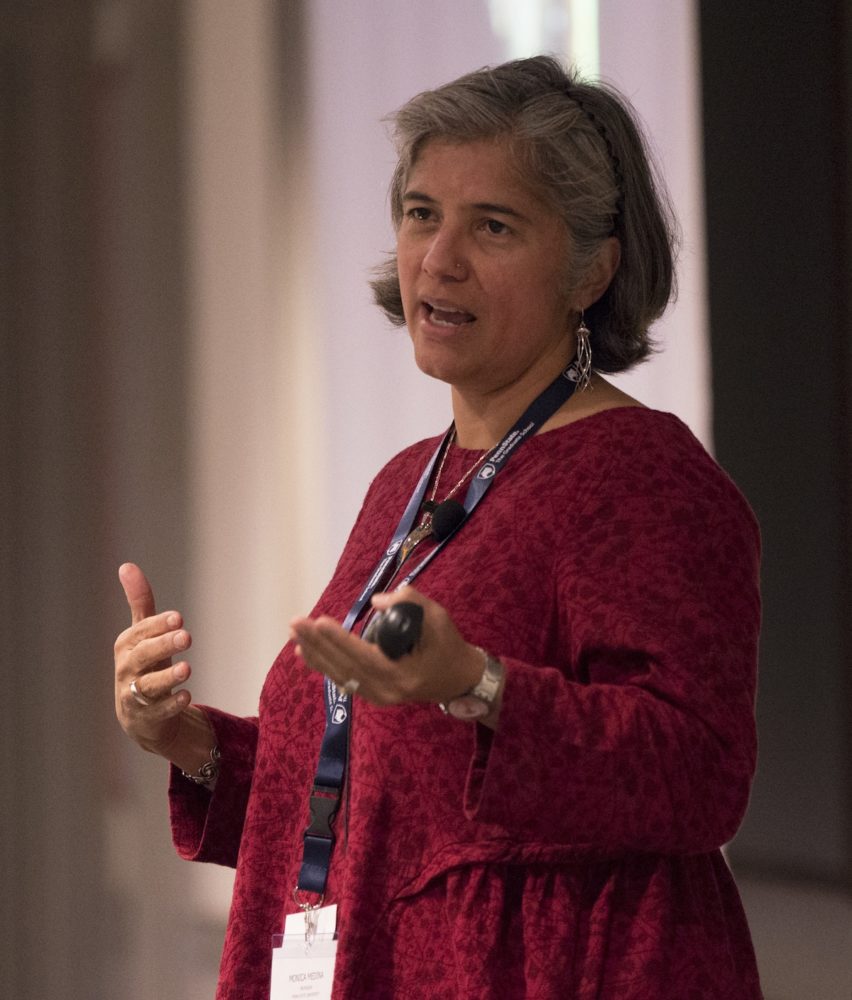
An upside-down jellyfish could help save coral reefs
The upside-down jellyfish, Cassiopea xamachana, has much to teach us about symbiotic relationships. Cassiopea’s symbionts are located on its underside, giving the jellyfish’s tentacles their darker color (Credit: Erlend Bjortvedt, Wikimedia Commons (CC-BY-SA)).
A surrogate species that thrives in the lab may shed light on the life cycle of endangered corals.
Upside-down jellyfish growing in a lab in Pennsylvania could help protect endangered coral reefs in the world’s oceans.
The creatures serve as a stand-in for corals off the southern coast of Florida that spawn once a year, seven days after a full moon, exactly three and a half hours after sunset — and at the height of Florida’s hurricane season.
For more than 10 years, Penn State University biologist Mónica Medina made hazardous annual pilgrimages to the Florida reefs to capture coral embryos during this narrow window of opportunity. Until she turned to a more accessible species — Cassiopea xamachana, the upside-down jellyfish, which can thrive in a lab — to provide a faster route to understanding and supporting coral reef health.
Like corals, these jellyfish are soft-bodied, ocean-dwelling invertebrates that rely on symbiotic relationships with photosynthetic algae to survive. They are also sedentary for most of their life, attaching themselves upside down to rocks in the shallow waters of the U.S. Gulf Coast, so that the algae dwellers on their underside can absorb sunlight from above.

Medina, who spoke Oct. 27 as part of the New Horizons in Science program presented by the Council for the Advancement of Science Writing during the ScienceWriters2019 conference in State College, Pa., calls the symbiotic relationship between corals and the photosynthetic algae that provide them with nutrients the “fundamental unit of the reef.”
Over the last two decades, rising ocean temperatures have resulted in a 70 percent loss of coral cover in Caribbean reefs, mainly because of the breakdown of this critical relationship. By examining how this union forms and fails, biologists aim to identify ways to fortify reefs increasingly endangered by global warming.
Corals and Cassiopea both undergo a life cycle that involves metamorphosis from an immature larval or polyp phase to an adult form. For Cassiopea, a crucial stage is the formation of the ephyra, or baby jellyfish, which then break away from the immature polyp before becoming adults. Previous work in Medina’s lab showed that this process, called strobilation, would not occur unless symbiosis was established with one particular strain of algae called Symbiodinium.
The team studied Cassiopea’s gene expression during strobilation in hopes of identifying genes turned on during the process. They were particularly interested in those involved in a biochemical mechanism called the retinoic acid pathway, known to drive metamorphosis in butterflies and frogs as well as jellyfish. But how the algae associated with Cassiopea triggered this pathway remained a mystery.
It turned out that levels of an enzyme called beta-carotene oxygenase increase during strobilation. The enzyme converts the pigment beta-carotene into the precursor of a key component of the retinoic acid pathway, kicking off the metamorphosis process. But the question was, where were the jellyfish getting this beta-carotene? It was from none other than their own Symbiodinium algae.
This work, led by graduate student Aki Ohdera, showed that the jellyfish receive their metamorphosis signal directly from the algae, revealing for the first time why these algae are required for this critical developmental event.
Symbiodinium’s critical role in the jellyfish life cycle has important implications for coral reefs at risk of bleaching, a fatal phenomenon caused when corals in warming waters evict their algae tenants. Just like the jellyfish, many species of coral depend on external cues to begin the process of metamorphosis. While these cues are not yet fully understood, the results of the work with jellyfish suggest that one way to improve the health of coral reefs is by better supporting the life-sustaining photosynthetic algae associated with them.
Just as numerous species of corals exist around the world, so too do many species of symbiotic photosynthetic algae, each of which can have a variety of effects across different types of coral and jellyfish. Given this diversity and complexity, how a given coral species reacts to climate change may not necessarily predict or reflect how other corals, either in the same reef or across the ocean, will respond.
“Things get more complicated,” Medina said. “But also more interesting.”